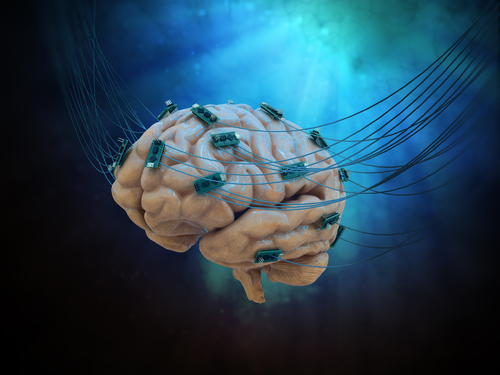Efficacy of Deep Brain Stimulation Depends on Type, Levodopa Response

The impact of deep brain stimulation (DBS) in improving motor function in people with Parkinson’s disease may be related to a patient’s response to levodopa therapy, and to the type of DBS administered, according to a small study.
Patients who responded to levodopa demonstrated better motor function after DBS surgery targeted the globus pallidus interna region in the brain over the subthalamic nucleus. For those with levodopa-resistant tremors, such surgery targeting the subthalamic nucleus region may be the preferred method, the researchers said.
The study, “Revisiting the L-Dopa Response as a Predictor of Motor Outcomes After Deep Brain Stimulation in Parkinson’s Disease,” was published in the journal Frontiers in Human Neuroscience.
Deep brain stimulation is a well-established surgical treatment for Parkinson’s disease that involves implanting a device in the brain to stimulate one of two adjacent regions — the subthalamic nucleus (STN) and globus pallidus interna (GPi) — with electrical impulses.
A widely accepted test for determining if a patient may benefit from such surgery is the L-DOPA challenge test, which evaluates an individual’s responsiveness to the medication levodopa. Physicians assess whether the patient’s motor symptoms lessen after a single dose of levodopa — a precursor of dopamine, which is deficient in people with Parkinson’s.
However, conflicting results have come from studies investigating whether levodopa response before deep brain stimulation can predict motor function improvement after the surgery.
“Most previous studies only enrolled patients undergoing STN-DBS, while the value of preoperative [levodopa] responsiveness as a predictor for GPi-DBS responsiveness has not been adequately studied,” researchers wrote.
To address this gap, scientists at the Shanghai Jiao Tong University School of Medicine, in China, reviewed the medical records of people with Parkinson’s disease who underwent either STN-DBS or GPi-DBS. The team then correlated the outcomes with preoperative levodopa responses.
Evaluated before surgery, levodopa response for motor functions was defined as an improvement in the Movement Disorder Society Unified Parkinson Disease Rating Scale-Motor Part III (MDS UPDRS-III). Lower scores reflected lessened motor symptoms.
Of the 38 study participants, which included 25 men and 13 women, 18 received STN-DBS, and 20 were treated with GPi-DBS. The mean age at surgery was 58.8, and the mean disease duration was 10.2 years. The median follow-up was seven months, which also included an MDS UPDRS-III assessment.
An analysis of the overall pre-DBS levodopa response was the same for the GPi and STN groups for the MDS UPDRS-III total score and the total non-tremor MDS UPDRS-III scores. The overall response also was the same for subscores for rigidity, tremor, slow movement (bradykinesia), and axial symptoms such as speech problems, neck rigidity, gait (manner of walking), and posture.
After GPi-DBS, the total MDS UPDRS-III score demonstrated a significant motor enhancement, improving by 26.7% from 48.4 points immediately after surgery to 35.7 at follow-up. Similarly, the total non-tremor MDS UPDRS-III score and all subscores (including tremor) showed significant improvement.
Likewise, the total MDS UPDRS-III score improved by 42.5% from 60.5 to 36.9 points in the STN-DBS group. Total non-tremor MDS UPDRS-III score and subscores also were significantly lower after surgery.
The analysis showed a significant correlation between patients who responded to levodopa before GPi-DBS and overall improved motor function (total MDS UPDRS-III scores) after surgery. Tremor subscores drove this correlation, as it disappeared when this subscore was excluded from the calculation.
There was no significant correlation between preoperative levodopa response and total MDS UPDRS-III score improvement after STN-DBS surgery. In contrast with GPi-DBS, a response to levodopa was significantly correlated with non-tremor total scores after STN-DBS.
These “findings also indicate that STN-DBS may be superior to GPi-DBS for controlling tremors that contain an [levodopa]-resistant component in [Parkinson’s disease] patients,” the researchers wrote.
Consistently, an analysis of subscores revealed a significant correlation between levodopa response and GPi-DBS tremor response, which was not found after STN-DBS. Furthermore, response to levodopa before STN-DBS significantly correlated with subscores of bradykinesia and axial symptoms after surgery.
A partial correlation analysis found older patients had worse total and non-tremor total scores after STN-DBS than younger participants. After including age in the calculation, the significant correlation between pre-GPi-DBS levodopa response and total motor function score after surgery remained, while the correlation between those that responded before STN-DBS and non-tremor total scores after DBS disappeared.
“To conclude, our findings suggest that: (1) GPi-DBS would be effective in controlling dopamine-responsive tremors but not dopamine-resistant tremors; (2) the age at the time of surgery may have a negative impact on the motor outcomes of STN-DBS; (3) for patients with dopamine-resistant tremors as a major complaint, STN-DBS may be superior to GPi-DBS; and (4) GPi-DBS could be considered for elderly patients with a satisfactory dopamine response,” the researchers wrote.






